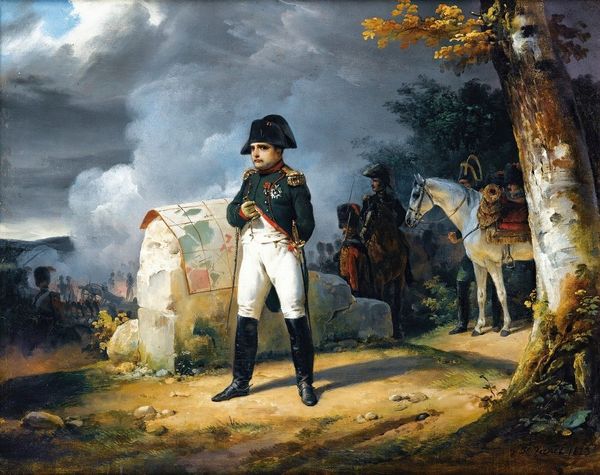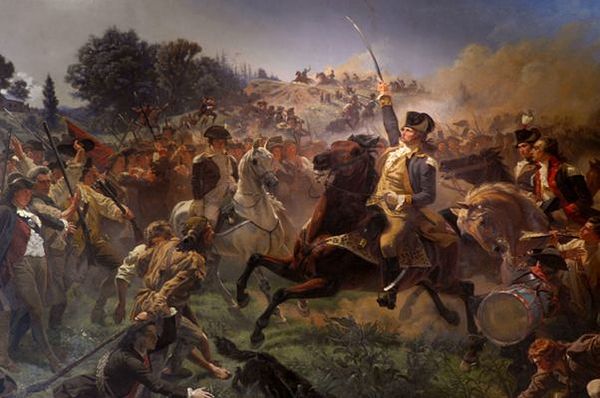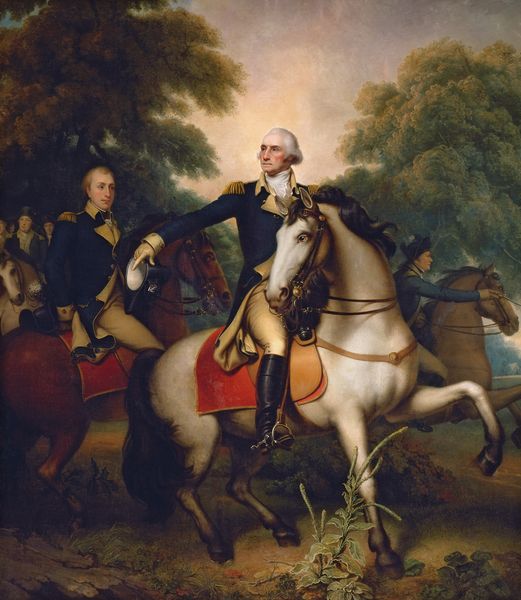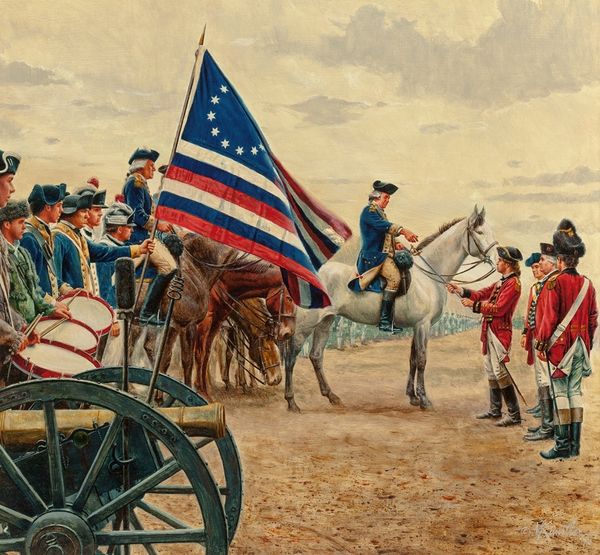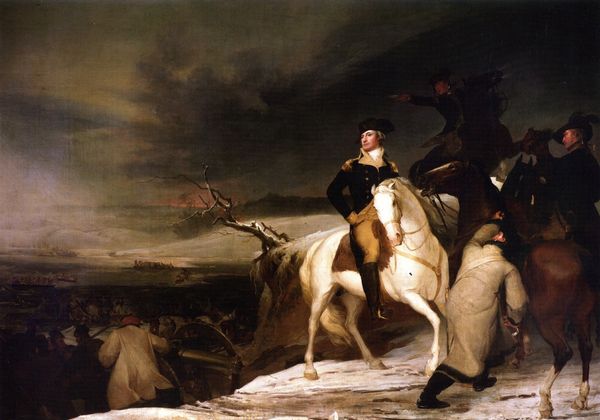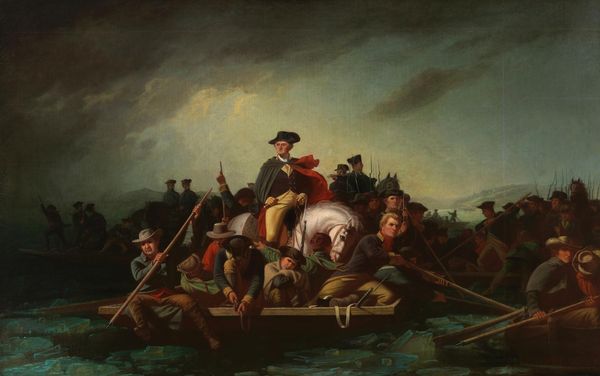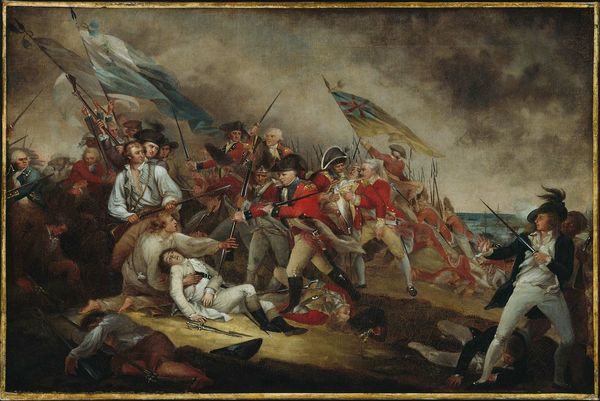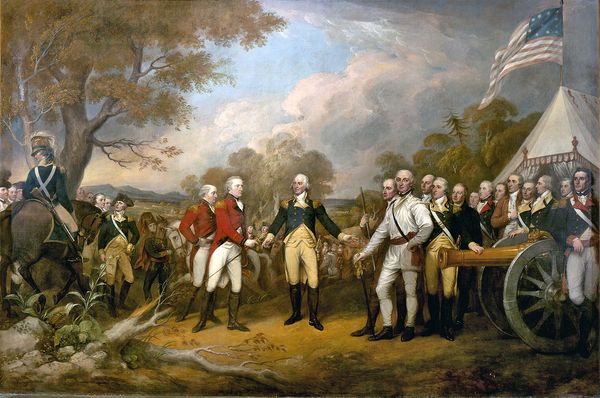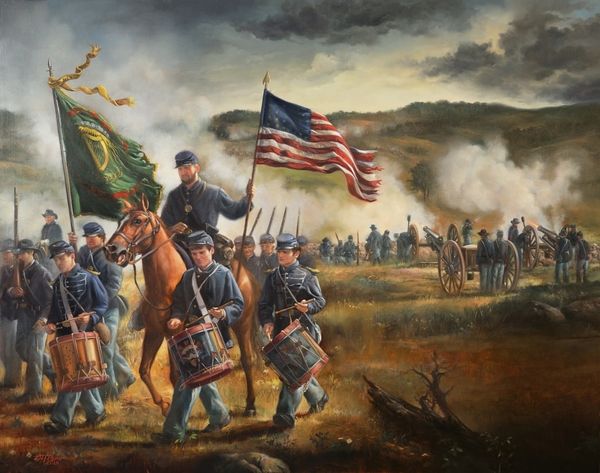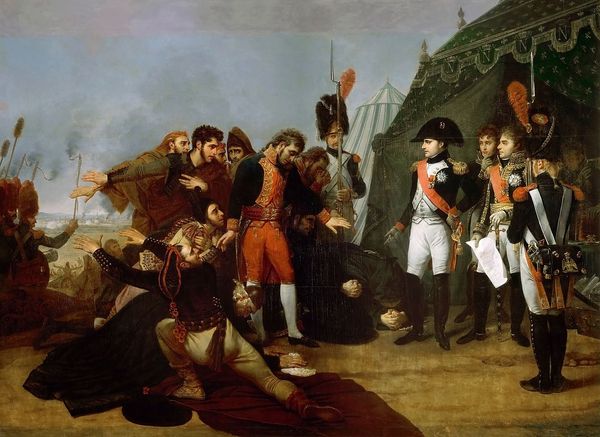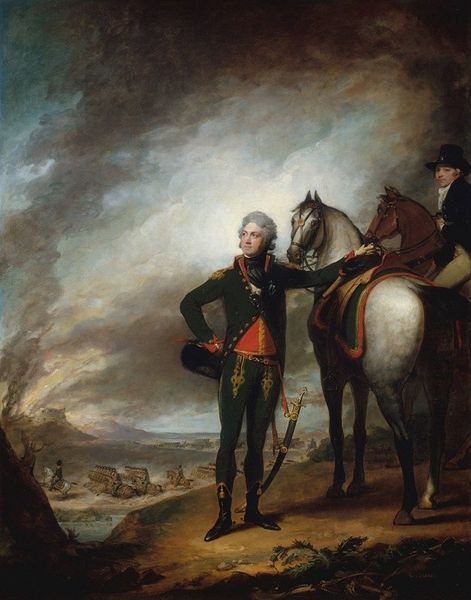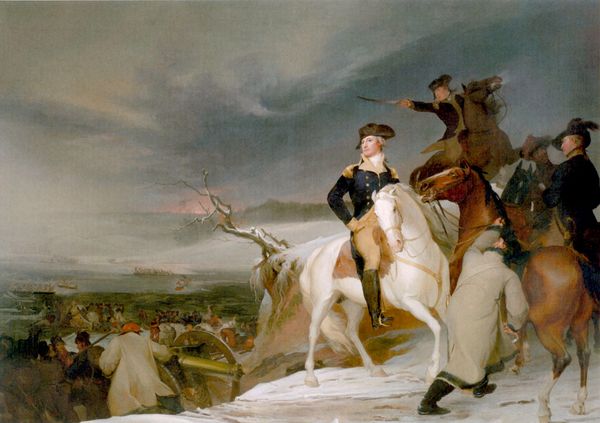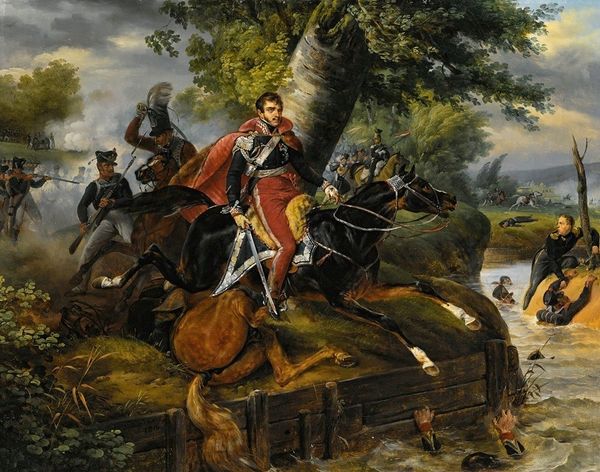
painting, oil-paint
#
neoclacissism
#
narrative-art
#
painting
#
oil-paint
#
oil painting
#
group-portraits
#
history-painting
#
academic-art
Dimensions: 370 x 550 cm
Copyright: Public domain
Curator: John Trumbull’s “The Surrender of Lord Cornwallis,” completed in 1820, depicts a pivotal moment in the American Revolutionary War. Trumbull, of course, aimed to capture not just the event, but its historical weight. Editor: Immediately, the muted colors strike me—it feels like looking back through a clouded lens, as if the victory is tempered with the somber reality of war. Plus, there's a wonderful tension in the composition with the stark white flag contrasting to the red, white, and blue American flag. Curator: Precisely. The placement of the surrendering British forces on the left and the victorious Americans on the right establishes a visual narrative of triumph and defeat. But there's a deliberate formality at play. Trumbull worked in a neoclassical style, so while his scenes were real, his representation aimed to teach virtues to the population and be heroic, in essence, state-sanctioned propaganda. Editor: Propaganda dressed in impeccable tailoring! The figures, especially Cornwallis's second-in-command, are so meticulously rendered—like perfectly posed chess pieces in this grand game of nations. Although I do wish we could see his face, you know, to see if he’s internally screaming into the void. It does leave something to be desired that we don’t quite see that intimacy. Curator: That touches upon a core challenge of history painting. While striving for accuracy, artistic license and idealized representation were, frankly, more important than historical detail in the final rendering. Trumbull wasn't present at the actual surrender at Yorktown, he compiled sketches and portraits of participants to achieve verisimilitude, which created a new perspective when reporting on these victories. Editor: So, it’s a meticulously constructed memory— a bit like national fan fiction. The billowing clouds in the backdrop seem to whisper "Remember this!" Curator: I agree. The painting underscores how pivotal events are selected and immortalized, playing an essential part in nation-building. It also points at how our perception of the revolution, even today, is built upon crafted visuals. Editor: Looking at this, I feel like it holds a mirror up to our past and to our ongoing need to mythologize history into something neater, grander—perhaps even prettier than it really was. It serves to be remembered.
Comments
No comments
Be the first to comment and join the conversation on the ultimate creative platform.
